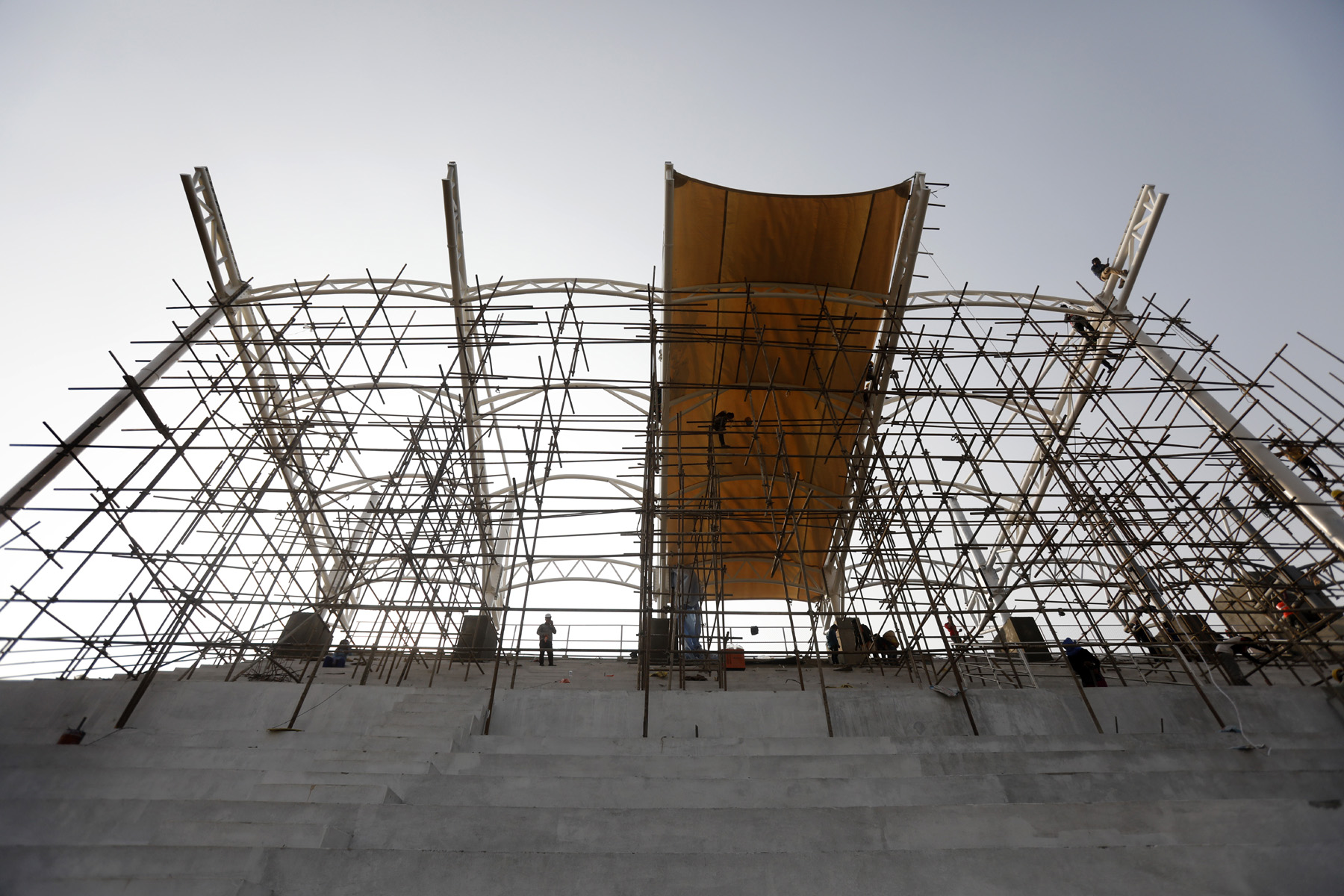Valley
Gridlock fears grip Valley residents as Kathmandu gears up for South Asian Games
The organisers of the Games have promised a mega show, but for many on the streets, the event could end up being more of a hassle.
Suman Malla
A day before the 13th South Asian Games’ official opening, sounds of rivet guns reverberated through the Dashrath Stadium as workers were frantically fixing seats and canopies on the VIP parapets.
As officials and workers race against time to wrap up the renovation of the sports complexes across Kathmandu, it’s hard to ignore the sea change the city has undergone since the last time the Games were held—20 years ago. The most notable change is the city’s traffic volume, which has grown exponentially.
According to the latest data of the Metropolitan Traffic Police Division, more than one million vehicles, including 154,433 cars, run daily on the streets of Kathmandu Valley. While the organisers claim they will pull off the Games without a major hitch, the signs so far haven’t been good.
“If you were to hear people discussing the Games in our business, they were probably talking about the traffic,” Ganga Bahadur Gurung, a taxi driver, told the Post, as he waited at Tripureshwor for his next passenger.
“There will be a lot of traffic chaos on the streets for the next ten days. If it is difficult to drive now, it will be impossible then,” he said, referring to the menacing traffic snarls in the Valley.
The organisers’ bid to keep some people away from the Games venues has drawn a lot of criticism.
“We advise commuters, if possible, to avoid travelling along the routes in the vicinity of the Games venues to keep from being stuck in traffic,” said Senior Superintendent Bhim Prasad Dhakal, chief of the Metropolitan Traffic Police Division.
Around 6,000 athletes and officials from seven South Asian countries are taking part in this year’s event. The Games’ Transportation Management Committee is spending around Rs100 million and plans to use 400 vehicles to shuttle athletes and officials between sports venues and hotels to ensure they don’t get caught in traffic jams.
The sporting events will be held at venues in Tripureshwor, Lainchaur, Kirtipur, Halchowk, Lagankhel, Satdobato and Gokarna in the Capital. Pokhara and Janakpur are other host cities.
The athletes and officials are lodged in 75 hotels across the Valley, from Bhaktapur in the east to Godavari in the south to as far north as Budhanilkantha, according to Arjun Bahadur KC, coordinator of the committee.
“Kathmandu is going to be much busier than normal, and we would urge people going about their usual business to take extra care,” said KC, calling on residents to plan for congestion and delays and to adapt by staggering commutes.
But there are concerns that these measures will create misery for residents in a city with a poor road system already struggling to meet demands.
“There is an incredible lack of detail about the transport plan. It’s veering from severe to extreme chaos,” said Ashish Gajurel, a transport and traffic engineer. “They had three years to plan for this and they’ve messed it up completely.”

While the authorities running the Games have repeatedly sought to reassure, many low-income workers will be unable to change their working hours to avoid peak congestion.
Roshan Bhattarai, a waiter who commutes daily from Panchkhal in Kavre to his job in Teku, says he finds the thought of imposing restrictions on buses from entering the city centre is scary.
“It’s normally crowded anyway, and nothing works properly,” Bhattarai said. “It’s going to be terrible for the next couple of weeks. I don’t know how to get around this.”
Authorities have asked commuters not to get alarmed, pointing to solutions that they say worked well during SAARC and BIMSTEC summits in the past.
Stop-and-go traffic schemes will be enforced on major roads and intersections to allow faster mobility for the athletes when transferring to different venues that will affect the general public less, according to the Metropolitan Traffic Police Division. “Besides, we will be providing motorcycle and mobile car escorts,” Dhakal said.
Traffic Police officials said around 700 additional personnel will be deployed in key areas in the Valley to manage traffic and assist motorists on the road during the Games.
Considering an expected large crowd during the opening and closing of the Games, the traffic police office has announced an odd-even scheme for the two days.
Under the scheme, vehicles with odd numbers will be allowed inside the Ring Road on the Games’ opening on December 1. Similarly, those having even numbers can operate on the closing day on December 10.
“Fans heading to watch the opening ceremony on Sunday should leave plenty of time and prepare for major delays,” Dhakal said, warning parking has been severely restricted or non-existent at many of the sites. Spectators going to the Dashrath Stadium will have to park their vehicles at Tundikhel.
“It’s a big challenge to tackle the traffic issue in Kathmandu,” he said. “But I am sure we can make this event a success if everybody cooperates.”




 13.12°C Kathmandu
13.12°C Kathmandu










